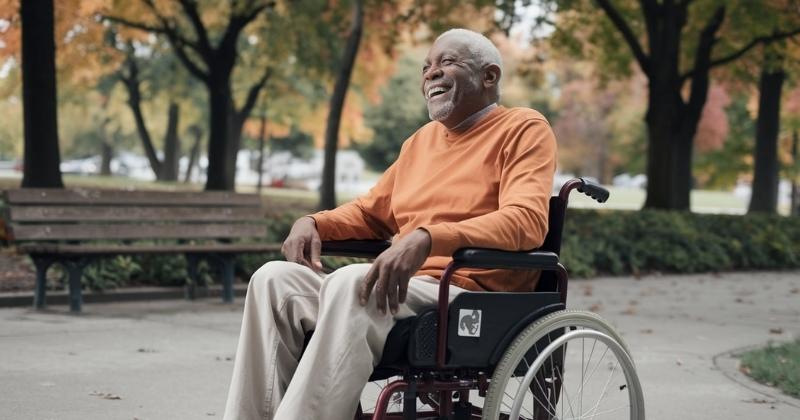
The South African Social Security Agency (SASSA) has confirmed that from October 2025 there will be further adjustments to social grant payments, in line with the framework of the national budget for the year. Earlier in the year, Finance Minister Enoch Godongwana delivered his budget speech in which he introduced increases to social grants. These adjustments began on 1 April 2025 with above-inflation increases, and a smaller top-up increase is now scheduled for 1 October 2025.
Key Takeaways
- Social grants set to rise in October: From 1 October 2025, most SASSA grants will increase by R10, including old age, disability, war veterans and care dependency grants.
- Dependence on welfare continues to grow: Four in ten South African households rely on state support, with nearly a quarter depending on grants as their primary source of income.
- Tax base under severe strain: Only about 1 million top taxpayers shoulder over 60% of personal income tax, while 28 million South Africans receive grants compared to 16.8 million employed.
About Arcadia Finance
Get your loan quickly and easily with Arcadia Finance. Pay no application fees and choose from 19 trusted lenders approved by South Africa’s National Credit Regulator. Enjoy a smooth process with reliable options designed to fit your financial needs.
Background to the Budget Framework
The 2025 budget was shaped after extensive negotiations, following strong public resistance to the proposed rise in Value Added Tax (VAT). National Treasury was compelled to rework its revenue and expenditure plans in order to find a balance that avoided increasing VAT while still making room for social spending. Interestingly, South Africa’s VAT is currently set at 15%, which is lower than many European countries where the average rate is closer to 20%. However, because of the high unemployment rate locally, even a 1% increase would have had a massive ripple effect on household budgets.
During the early drafts of the budget in February and March, the Finance Minister had intended to raise social grants at a rate consistently higher than inflation over three years. This was to soften the blow of a higher VAT rate. When the VAT increase was abandoned, the ability to maintain above-inflation increases across the outer years of the framework was also lost.
Nevertheless, allocations for 2025/26 were not reduced. The Treasury committed to maintaining the R1.6 billion increase set aside for grants. In total, R284.8 billion was earmarked for the 2025/26 financial year. This amount will decrease in subsequent years, with R259.7 billion allocated for 2026/27 and R271.4 billion planned for 2027/28. For context, the entire grant budget is larger than the health department’s annual budget and sits among the biggest spending items in government’s books, surpassed only by education and debt servicing costs.

New Grant Payment Levels
From 1 October 2025, all main categories of grants will rise by R10. The specific payment levels will be:
| Grant Type | Current Amount | New Amount | Increase |
|---|---|---|---|
| Old Age Grant | R2 310 | R2 320 | +R10 |
| Old Age Grant (over 75 years) | R2 330 | R2 340 | +R10 |
| War Veterans Grant | R2 330 | R2 n340 | +R10 |
| Disability Grant | R2 310 | R2 320 | +R10 |
| Care Dependency Grant | R2 310 | R2 320 | +R10 |
SASSA also set out the October payment schedule. Old age grants will be issued on 2 October, disability grants on 3 October, and children’s grants on 6 October. Beneficiaries are advised to use official SASSA communication channels to confirm payment dates, as scams targeting grant recipients remain widespread. One useful tip is to sign up for SMS alerts directly from SASSA to avoid falling for fraudulent messages.
Rising Dependence on Social Welfare
In 2003, only 12.8% of South Africans received social grants. By 2019, this figure had climbed to 30.9%, and in 2024 it surged further to 40.1% due to the introduction of the special Covid-19 Social Relief of Distress (SRD) grant. This means that in less than two decades, reliance on grants has more than tripled, reflecting both the depth of poverty and the country’s persistently high unemployment rate, which is currently hovering around 33%.
The SRD payment was first created as a temporary emergency measure to provide households with some financial support during the pandemic. Initially set at R350 per month, it has since been increased to R370. Although intended to end once the crisis passed, government has extended it year after year. In the most recent budget, it was renewed again until March 2026, with R35.2 billion allocated to cover monthly payouts and the cost of administering the scheme.
Government has publicly indicated that it hopes to integrate the SRD into a broader permanent safety net, possibly as part of a basic income grant. However, the details and political consensus for such a scheme are still unresolved. Civil society groups argue that a universal basic income grant of around R500 to R1 000 could immediately reduce food insecurity, but Treasury has consistently warned that such a policy may push the national debt into unsustainable territory.
Household Reliance on Grants
Findings from Statistics South Africa’s 2024 General Household Survey reveal the deepening reliance of households on social assistance. The survey shows that four out of every ten households rely on state welfare in some form. Grants are now the second most important source of income after wages and salaries. For 23.8% of households, grants are in fact the main source of income. In some rural provinces like the Eastern Cape and Limpopo, the reliance is even more dramatic, with nearly half of all households depending on grants as their primary income source.
This rising dependence on social assistance places growing pressure on South Africa’s limited pool of taxpayers. Economists note that without stronger job creation, the pressure on state finances will continue to rise, potentially forcing future trade-offs in infrastructure or healthcare spending.
The Tax Base Versus Beneficiaries
According to SASSA’s 2023/24 annual report, 28 million people currently receive grants in South Africa. By contrast, the latest employment statistics from Statistics South Africa record only 16.8 million people as being employed. This stark imbalance means that more South Africans are receiving state assistance than are currently working – a rare situation globally and one that highlights the fragility of the country’s labour market.
In terms of taxpayers, around 26 million individuals are registered, but just 7.9 million actually pay personal income tax. More concerning is that approximately 1 million taxpayers, representing 1.5% of the population, contribute 60.9% of the total personal income tax collected.
This “taxpayer pyramid” has long worried Treasury officials, who warn that if even a small portion of these top earners emigrated, the revenue base could collapse.
This imbalance highlights the scale of the fiscal challenge: a relatively small tax base is carrying the weight of supporting a much larger group of beneficiaries. As a tip, financial experts recommend that middle-income earners plan carefully for future tax increases, as government may look to widen the personal income tax bracket in coming years to manage this imbalance.
Debates Around Grant Structures
Some policy institutes have argued against the perception that grants discourage job seeking. Their position is that state payouts actually enable people to search for employment by covering essential costs. In fact, a study by the University of Cape Town found that recipients of child support grants were more likely to attend job interviews because they could afford transport costs.
Nonetheless, even the National Treasury has raised warnings about the risks of fostering dependency through unconditional and permanent grant schemes.
There have been active proposals to shift away from a universal “basic income grant” model towards a “jobseeker’s grant”. Such a system would be conditional, with the intention of supporting those actively looking for employment rather than creating a permanent transfer system without requirements. This mirrors models in countries like Germany, where unemployment benefits are tied to active job-hunting requirements, including proof of applications and training attendance.
Conclusion
The latest round of social grant increases highlights both the government’s commitment to supporting vulnerable households and the immense pressure on South Africa’s public finances. While millions of people will benefit from the October adjustments, the growing gap between the number of beneficiaries and the limited tax base raises serious concerns about sustainability. As debates around a basic income grant versus a jobseeker’s grant continue, the challenge remains how to provide meaningful social protection without deepening dependency or undermining long-term economic stability.
Fast, uncomplicated, and trustworthy loan comparisons
At Arcadia Finance, you can compare loan offers from multiple lenders with no obligation and free of charge. Get a clear overview of your options and choose the best deal for you.
Fill out our form today to easily compare interest rates from 19 banks and find the right loan for you.




